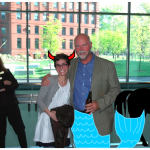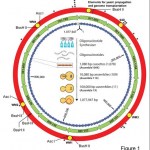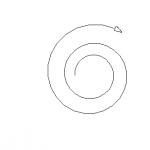artificial life
There's a terrific new article about synthetic biology in SEED by James King, go check it out! Here's a little taste:
"Synthetic biology" is a catch-all label liberally applied to a host of methods for designing and constructing living things. Given the term's multiple definitions, one of Synthia's most immediately useful applications may be to place the achievement it represents within the context of synthetic biology's various flavors, in order to clarify what the creation of artificial life might actually mean.
There is an interesting and very thoughtful piece by Craig Venter and Daniel Gibson in today's Wall Street Journal going through what their breakthrough is and what it isn't, where they see the project going in the future, and why public discussion is important:
[Previous genetic engineers] did not create life in a test tube, nor did we create life from scratch. We transformed existing life into new life. We also did not design and build a new chromosome from nothing. Rather, using only digitized information, we synthesized a modified version of the naturally occurring Mycoplasma mycoides…
The reaction to the Venter Institute's synthetic genome transplantation has been decidedly mixed. Is this the beginning of something new and wonderful, the ability to really design organisms from scratch? Is it something more sinister, the beginning of a dark era where techno-corporate (or terrorist) interests can design something that will destroy the environment in catastrophic ways? Is it just a technical advance or a conceptual breakthrough? A philosophical revolution? Is it a Big Deal or big whoop? Synthetic biology has never been just one thing and still has many different goals, with a…
This is a pretty old video we made about Craig Venter that I've shared before on Hydrocalypse, but I think now is a good time to share it again. When Craig isn't creating synthetic bacteria, he's sailing the world, searching the oceans for interesting DNA sequences. We were inspired by this lifestyle (and sometimes even his science too) and SNL, and from that came Venter's on a Boat, by Hydrocalypse Industries (warning: the song contains a lot of bad language):
The J. Craig Venter Institute has just announced the creation of the first bacterial cell controlled by a genome that is entirely chemically synthesized (PDF). The group has been working towards this goal for several years now, first working out how to synthesize and assemble such large pieces of DNA and how to transplant a genome from one organism to another. This result puts it all together, a synthetic version of the genome of the bacterium Mycoplasma mycoides and transplantation into a Mycoplasma capricolum cell. This synthetic cell is almost identical to a natural M. mycoides, but also…
I've written before about artificial life researchers from the 18th and 20th centuries working to create robots that attempt to recreate the human voice. I recently saw this terrifying video over at the PopSci blog of a recent robotic voice machine and wanted to share it:
Over at Noise For Airports, Nick shares a very different way to combine biology, computer science, and music--The Heart Chamber Orchestra, which plays music generated from the rhythm of their combined heartbeats in real time:
Light interacts with and controls biological systems in diverse and fascinating ways. Our eyes are made up of thousands of cells that respond to light, sending signals to our brain as light in different colors and shapes moves across them. Photosynthetic cells are full of receptors that can sense and respond to many wavelengths of light, allowing cells to absorb light for photosynthesis, but also to move towards areas of more sunlight and know when the seasons are changing. Synthetic biology takes these light-responsive systems as parts that can be recombined, shuffled and integrated into…
An interesting paper in BioEssays last month looks at the potential future of xenobiology, totally orthologous biological systems made out of synthetic nucleotide and amino acid bases, new cells that use XNA instead of DNA. The author, Markus Schmidt, argues that while the design of such systems current poses a difficult technological challenge to researchers in synthetic biology, that xenobiological systems will enable a "genetic firewall" between natural and designed organisms, creating a built-in measure of biosafety.
This is something I've argued for before, in reference to creating new…
Because of my recent interest in autonomous, biologically inspired robots, my friend Tami sent me some fascinating links about designs and concepts for future flesh eating robots.
From New Scientist, furniture that captures vermin and uses the biomass to power fuel cells that run small electronics:
From Wired, Human corpse powered robots being developed by the Defense Department:
From the file marked "Evidently, many scientists have never seen even one scary sci-fi movie": The Defense Department is funding research into battlefield robots that power themselves by eating human corpses. What…
Cellularity is a new project by James King, a speculative designer working on biotechnology and interaction design. The project focuses on the potential future of smart pharmaceuticals, drug molecules surrounded by membranes that over time as technology advances may come to more and more closely resemble actually living things. He proposes a cellularity scale from totally non-living to really alive artificial cells. This quantification of "aliveness" in a way is something that may need to be done if some of the proposals of synthetic biology come to fruition. When does a membrane surrounding…
Synthetic biology deliberately equates genetic networks to electronic circuits, cells to machines, organisms to factories. In synthetic biology, every living can be thought of as a cyborg, a living machine that can be manipulated, changed to meet our needs, parts swapped in and out like a computer. Some projects in synthetic biology and biologically inspired engineering hope to bring the analogy a step further, combining biological and actual electronic and mechanical components into a single engineered unit, with the goal of essentially making tiny autonomous cyborgs.
There are a lot of…
Some of the responses to my post about synthetically expanding the genetic code have highlighted some of the weaknesses in my argument about the safety of using a different genetic code. Namely, that "life finds a way", that we can't really ever know for sure what will happen when we release a synthetic organism in the wild, or how natural selection will act on them. The science fiction scenarios where engineered organisms escape, break out of the designed restrictions on their growth and take over in new and terrifying ways are compelling, frightening, and instructive for thinking about…
Modern day biological engineering and artificial life research focuses on the microscopic, the molecular, the informational, the stuff of the scientific revolutions of the past one hundred years. Our current synthetic biologies aim to turn the living into the designed, the wet into the computational, the complex into the understandable. In the 1700's, the interplay between the living and the mechanical was reversed; engineers were trying to make machines look and feel more like living things--soft, flexible, moist. Studying these historical artificial life technologies provide a valuable…
I just saw this neat blog post about Conway's Game of Life projected into three dimensions. You can download the script and play around with it yourself!
My first exposure to programming was as a nerdy elementary schooler playing with Logo, a simple computer language written for educational use as a way to teach basic concepts in programming and computer science. The language controls the behavior of the "turtle," a triangular cursor in the middle of the screen that can be programmed to move around and draw lines.
In one of the kid's versions I remember that the cursor even looked like a little turtle on the screen, not just a triangle. As you probably could tell, I'm fascinated by how computer scientists use language from living things and…
What does it mean to create life in a computer? In 1970, John Conway built a simple computer game where a user decides which boxes in a grid are populated and then hits start, letting the computer "evolve" depending on the initial conditions. Each "cell" of the grid can be "alive" or "dead" and has eight neighbors that determine its survival into the next "generation". The rules are pretty simple:
If a live cell has fewer than two (underpopulation) or more than three (overpopulation) live neighbors, it will die
if a dead cell has three live neighbors, it will come to life
and if a live cell…









